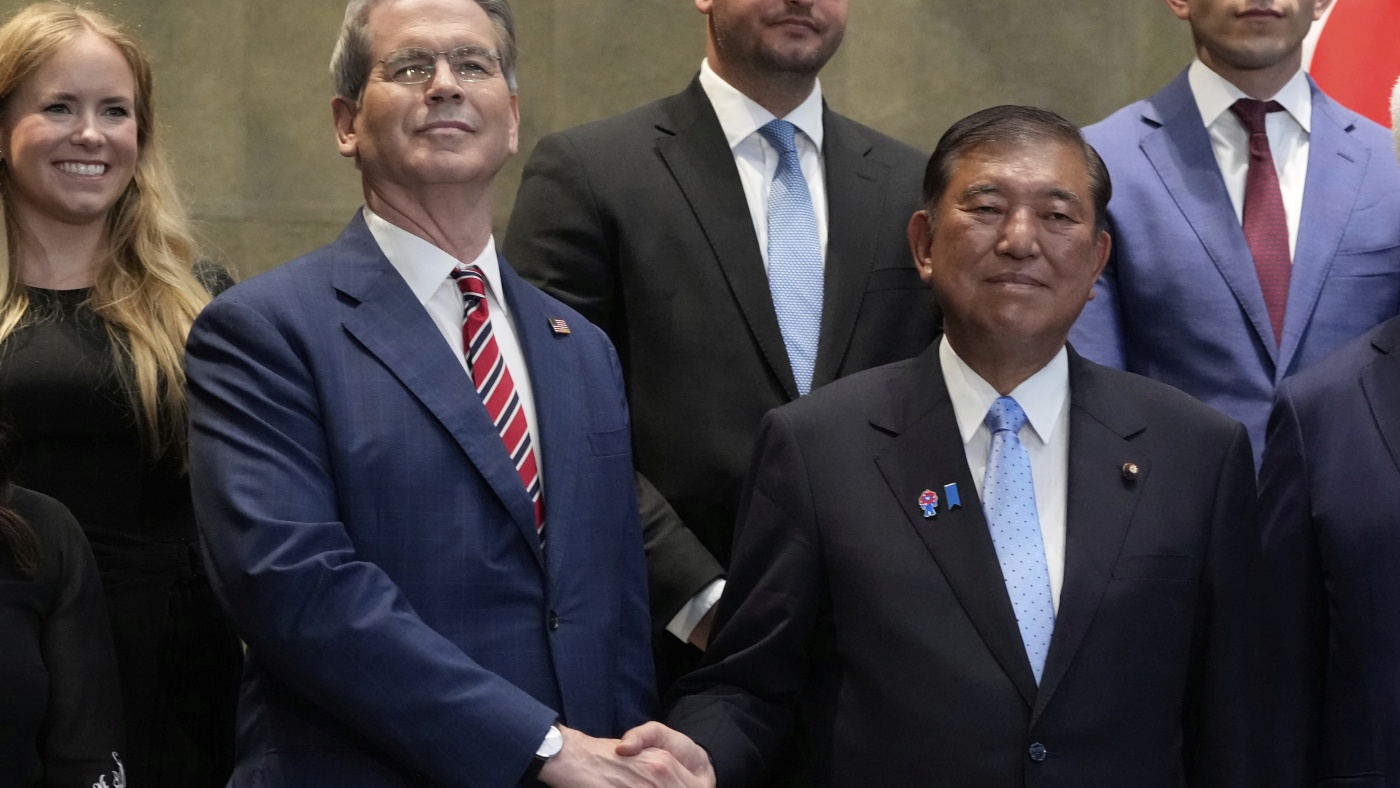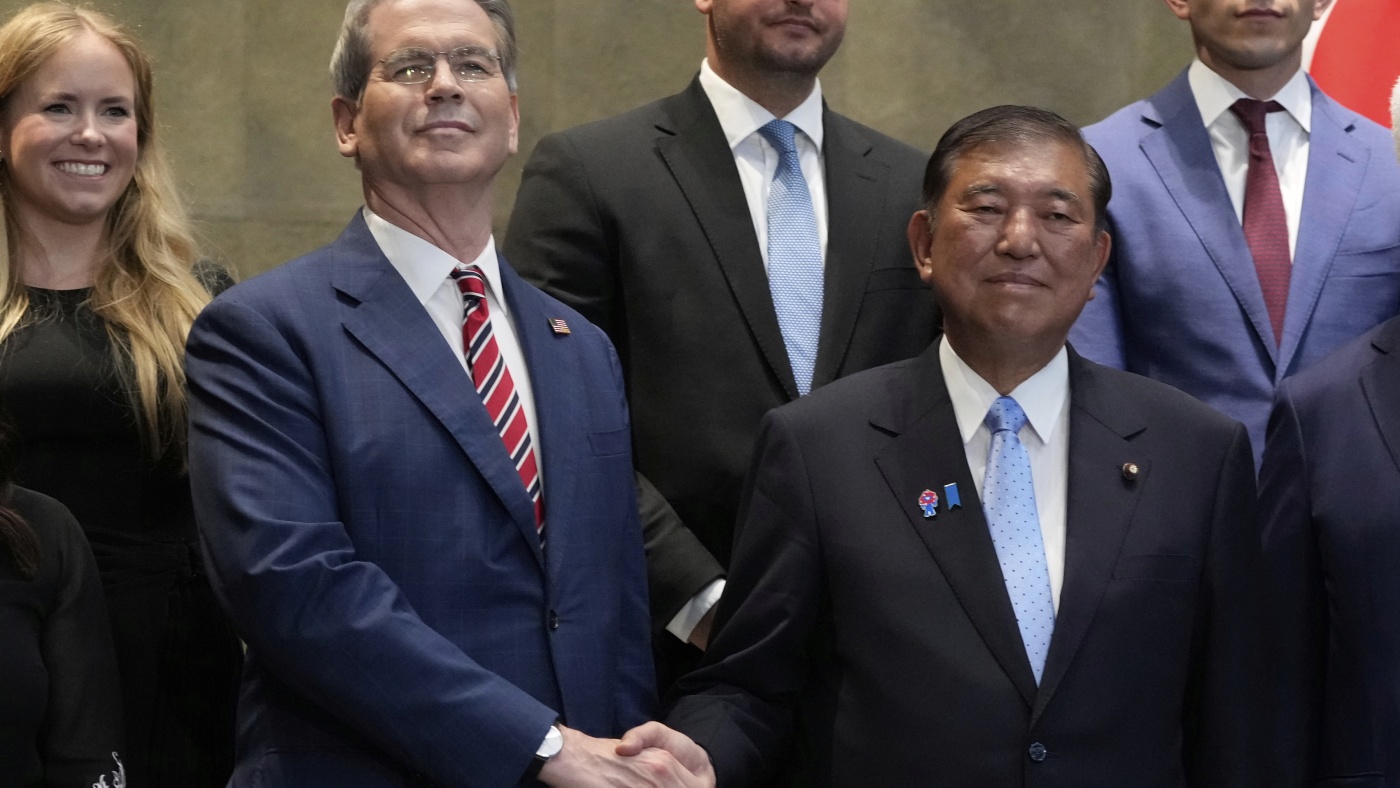The Murky Waters of Trade: Analyzing Trump’s “Massive” Deal with Japan
Introduction: A Deal Wrapped in Ambiguity
The announcement of a “massive” trade deal between the United States and Japan, spearheaded by former President Donald Trump, has ignited a wave of speculation and debate. The deal, which includes a 15% tariff on Japanese imports, was presented as a triumph for American trade policy. However, beneath the surface, the agreement is shrouded in ambiguity, raising questions about its true impact and long-term implications.
The Tariff Conundrum: A Double-Edged Sword
The centerpiece of the deal is the 15% tariff on Japanese imports, a reduction from the initially threatened 25% tariff. While this reduction may seem like a concession, the tariff still poses significant challenges.
Economic Ripple Effects
Tariffs, by design, increase the cost of imported goods. For American consumers, this translates to higher prices for a wide range of products, from electronics and automobiles to food items. The ripple effects extend to businesses that rely on Japanese imports as inputs for their own products. These businesses may face higher costs, potentially impacting their competitiveness in both domestic and international markets.
The Threat of Retaliation
The “reciprocal” nature of the tariffs, as described by Trump, raises concerns about potential retaliatory measures from Japan. Historically, countries have responded to tariffs by imposing their own levies on imports from the imposing nation. This tit-for-tat approach can escalate into a full-blown trade war, harming businesses and consumers on both sides.
The Elusive “Massive” Deal: Scope and Impact
Trump’s characterization of the deal as “massive” is met with skepticism due to the lack of specific details. The available information is vague, making it difficult to assess the agreement’s true scope and long-term impact.
The $550 Billion Investment: A Closer Look
One of the deal’s highlights is a potential $550 billion investment by Japan into the U.S. economy. While this figure is impressive, its true significance depends on several factors. Is this investment new, or does it include existing commitments? Which sectors will benefit, and how many jobs will be created? Without these details, the economic impact of this investment remains uncertain.
Sector-Specific Implications
The long-term implications for various sectors of the American economy are still unclear. While some domestic industries may benefit from reduced competition, others could suffer from higher input costs and potential retaliatory tariffs. A comprehensive sector-by-sector analysis is necessary to fully understand the deal’s impact.
Geopolitical Chessboard: Trade as a Strategic Tool
Trade deals are not just about economics; they also serve as tools of geopolitical influence. The U.S.-Japan alliance is a cornerstone of global stability, and trade relations play a crucial role in maintaining this partnership.
Strained Relations and Alternative Alliances
The imposition of tariffs, even at a reduced rate, could strain U.S.-Japan relations. Japan may seek alternative trade partners, such as China, to mitigate the impact of the tariffs. In the current geopolitical landscape, where tensions are high, maintaining strong alliances is more important than ever.
Strategic Implications
The trade deal must be evaluated not only from an economic perspective but also in terms of its broader strategic implications. The U.S. must ensure that its trade policies do not inadvertently push allies towards adversaries.
The American Consumer: The Silent Stakeholder
The debate surrounding trade deals often focuses on businesses and industries, overlooking the American consumer. However, consumers are the ultimate drivers of economic activity.
Higher Prices and Reduced Spending
Tariffs increase the cost of imported goods, which can reduce consumer spending. Lower consumer spending can slow down economic growth, impacting businesses and jobs.
Limited Consumer Choice
Tariffs can also limit consumer choice by making imported goods less accessible or affordable. This can be particularly detrimental to lower-income households, who may rely on these goods to meet their basic needs.
A Familiar Tune: Trump’s Trade Tactics
Trump’s approach to trade negotiations often involved aggressive tactics, including the threat of tariffs. This approach was not unique to Japan, as similar strategies were employed with other major trading partners, such as China and the European Union.
Effectiveness and Consequences
While some argue that these tactics were effective in securing concessions, others contend that they created uncertainty, damaged relationships, and ultimately harmed the American economy. The long-term consequences of these policies are still being debated, and the trade deal with Japan must be viewed within this broader context.
Transparency and Scrutiny: A Call for Accountability
The lack of specific details surrounding the trade deal underscores the need for greater transparency in trade negotiations. The American public deserves to know the full implications of these agreements, both positive and negative.
The Role of Congress
Congress should play a more active role in scrutinizing trade deals and ensuring that they serve the best interests of the American people. Independent economic analyses should be conducted to assess the potential impact on various sectors of the economy and on consumer welfare.
Conclusion: A Deal in Need of Clarity
In conclusion, while Trump’s announcement of a “massive” trade deal with Japan may sound promising, a closer examination reveals a more complex and uncertain reality. The 15% tariff on Japanese imports, while lower than initially threatened, could still have significant economic consequences for American businesses and consumers. The lack of specific details regarding the scope and impact of the deal further adds to the uncertainty. The agreement’s long-term effects on U.S.-Japan relations and its broader geopolitical implications warrant careful consideration. Ultimately, this trade deal, like many others, demands scrutiny, transparency, and a commitment to policies that prioritize the interests of all Americans. The murky waters of trade require clear navigation, and this deal is no exception.








